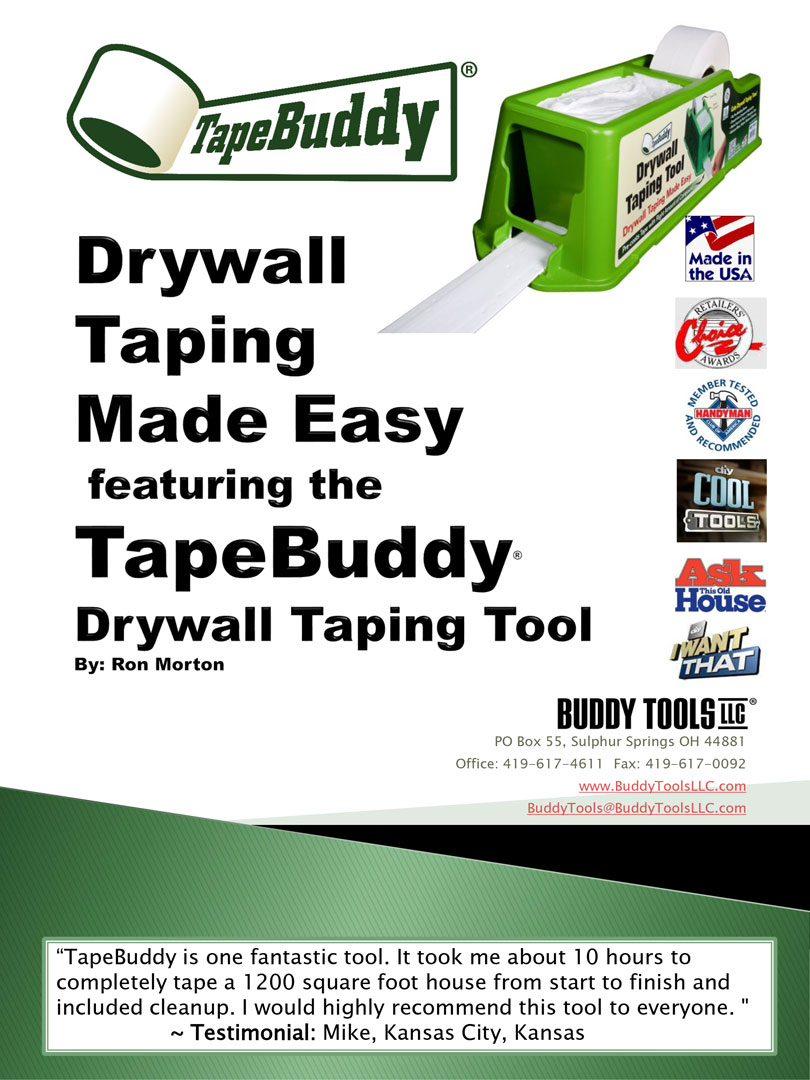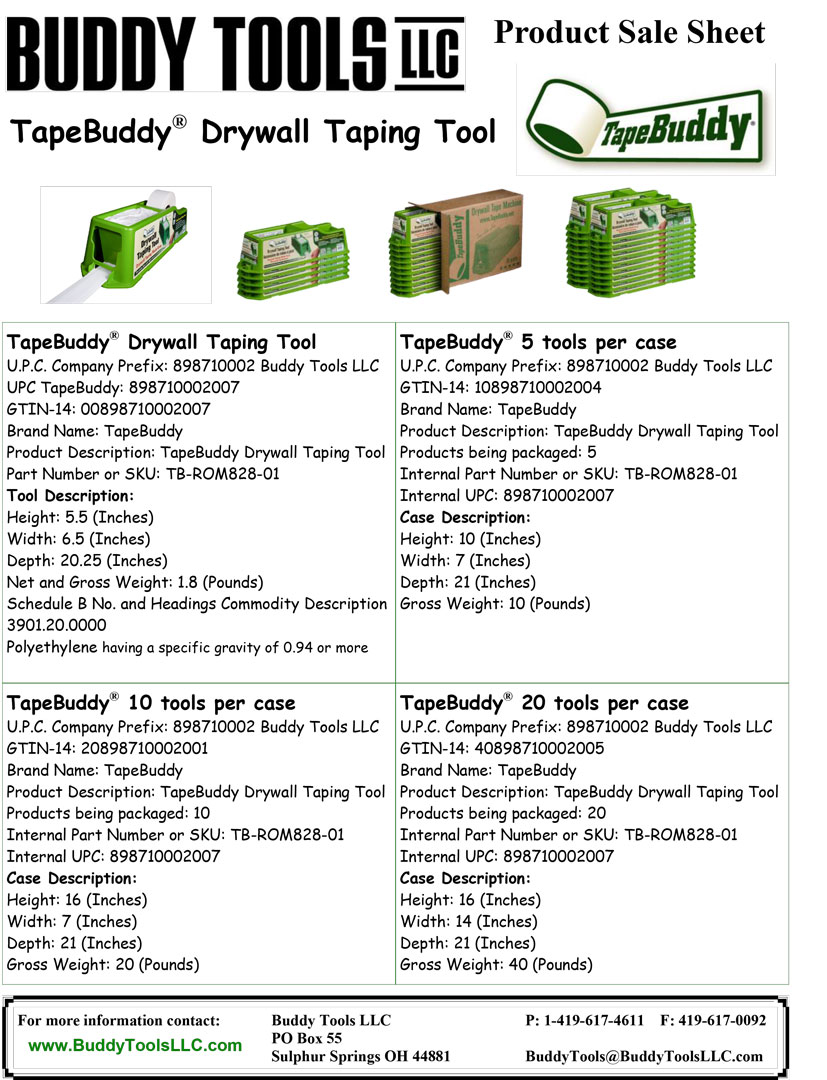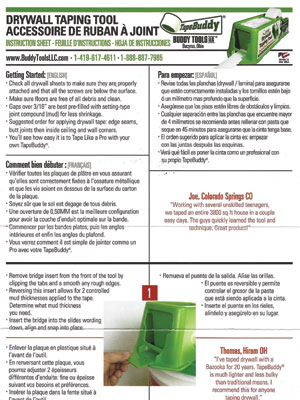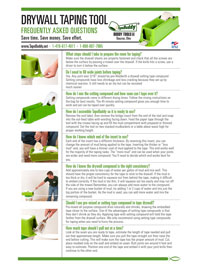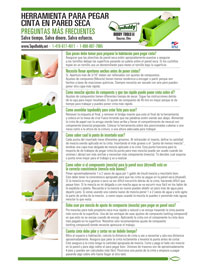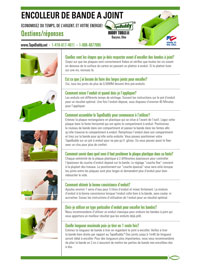FAQ
We’ve included some tips on how to get the most out of your drywall tools and get the best results for your drywall project.
- Some drywall joint knives or trowels may have a sharp burr on the edge. This edge tends to pull the mud rather than smooth it out correctly. Remove the burr with a file or sandpaper. Make sure the corners are not bent. You may want to slightly round the corner of the trowel a little so that it doesn’t cut the paper when embedding the corners.
- Many professionals apply the tape in this order: wall and ceiling edge joints, butt joints, vertical corners and then ceiling corners.
- You can also use TapeBuddy for taping around shower fixtures, windows, doors, or anywhere you need to straighten out a rough edge. Pre-fill the rough edge space with setting type compound before taping.
- If the mud compartment is full of mud and you notice that the tape roll is about to run out, you’ll need to empty the mud compartment to feed the new roll of tape. Or you can tape the new roll of tape to the end (if you catch it in time) and pull the new tape through the mud compartment.
- Compound will dry out over night even in a sealed bucket. To help prevent this, clean the sides with water and maybe pour a little more water on the mud surface before sealing with the lid.
- You can decrease the compound applied on the tape even more by applying one or two layers of duct tape over the insert, decreasing the mud gap.
- TapeBuddy® tools hold about 4 pounds of drywall coumpound in the compartment, enough to coat about 110 to 120 feet of tape.
- Want to fasten the tool down for a better hold? Drill a 3/16” hole on each side of the tool base then fasten it to a board or a piece of scrap drywall.
Frequently Asked Questions from Consumers
Downloadable PDF

Money-Back Guarantee
We’re so confident that you will like our products that if you are not satisfied within 30 days, you can return it for a full refund.

Fast Shipping
We know you’re excited to get started on your project so we do our best to get your tools out to you as quickly as possible.

Best sale price
We appreciate your business and ensure the lowest prices on all of our products with monthly sales and deals!
Contact Us
Have more questions? We’ll be happy to answer them all. Have a look at the most frequently questions asked and if you feel that your question is not answered use the contact form to send us an email.

